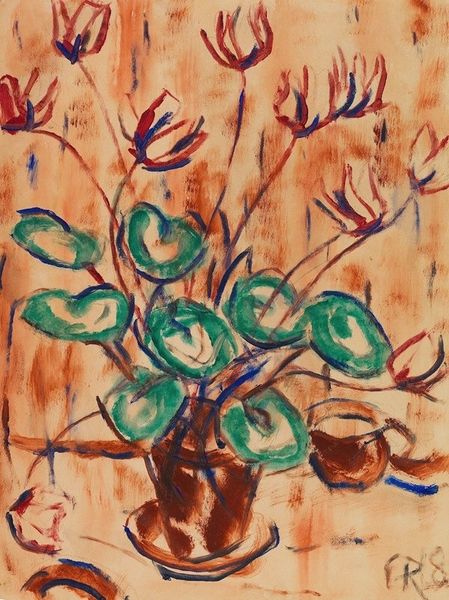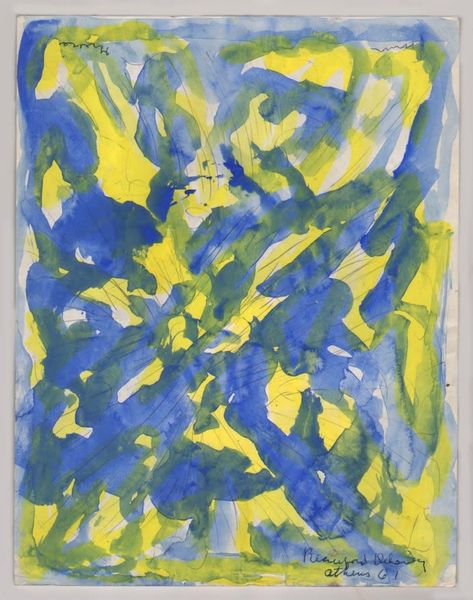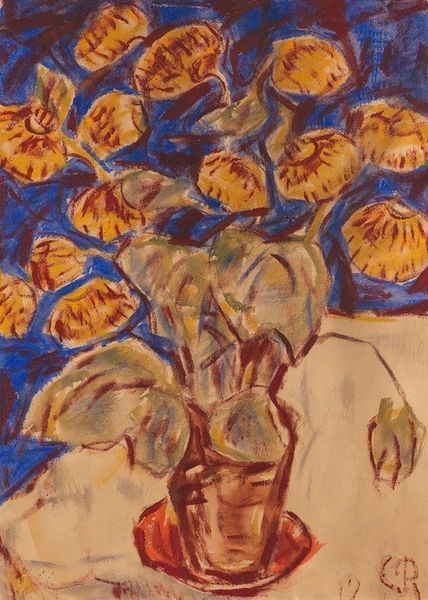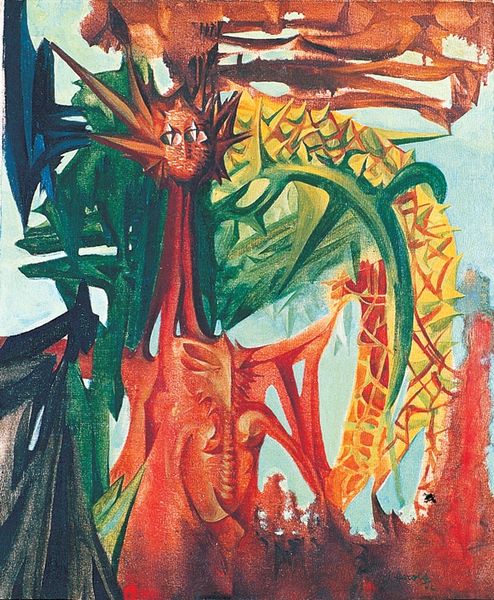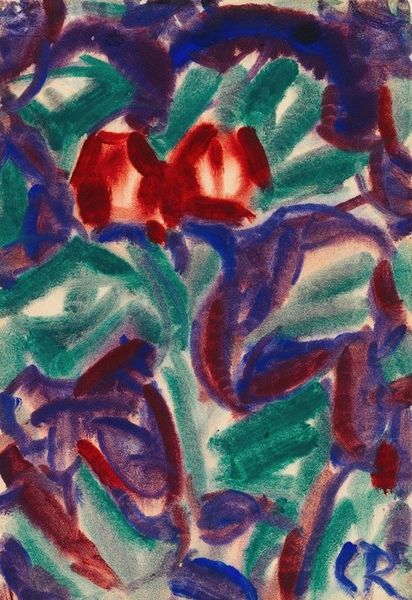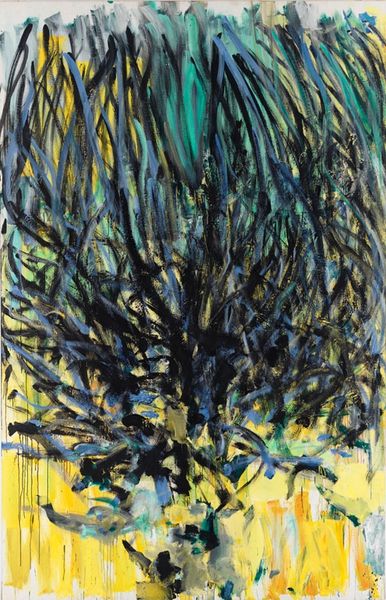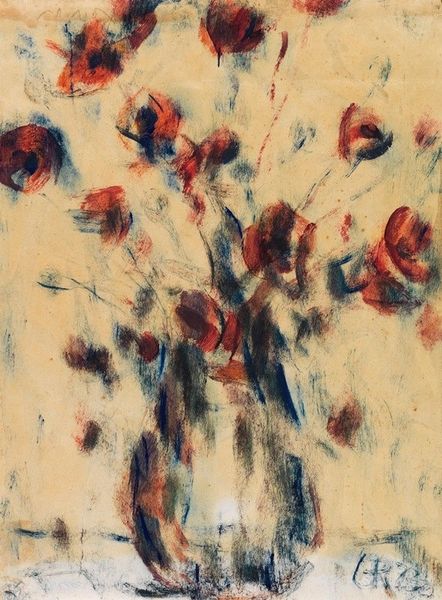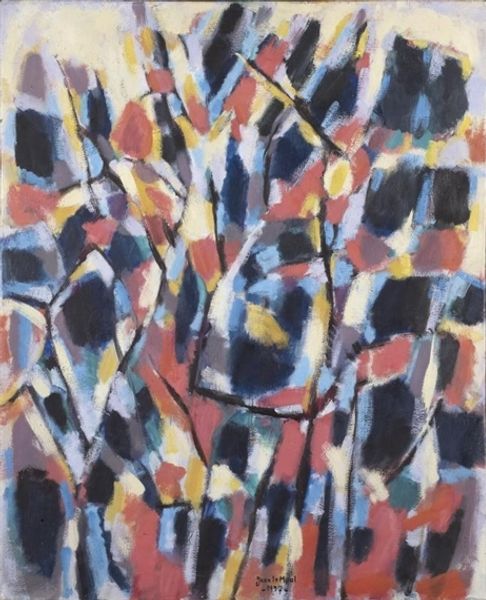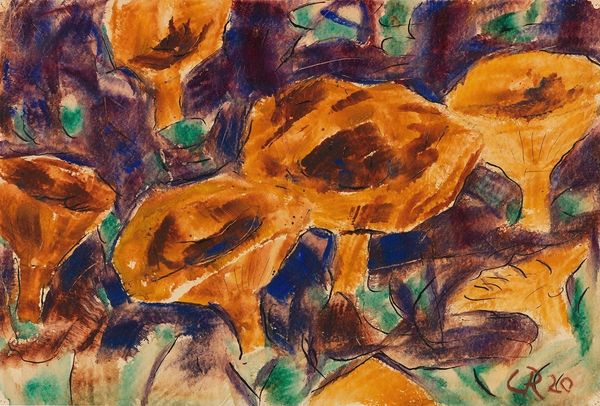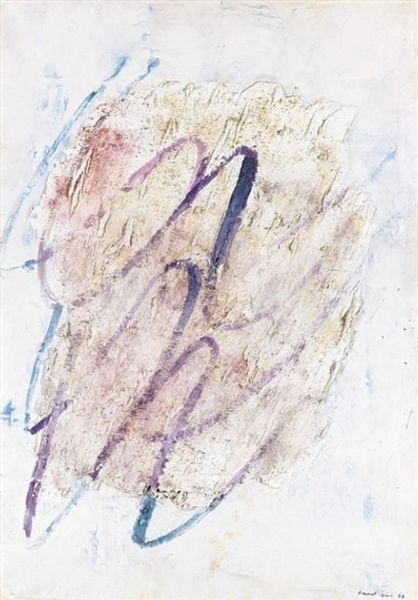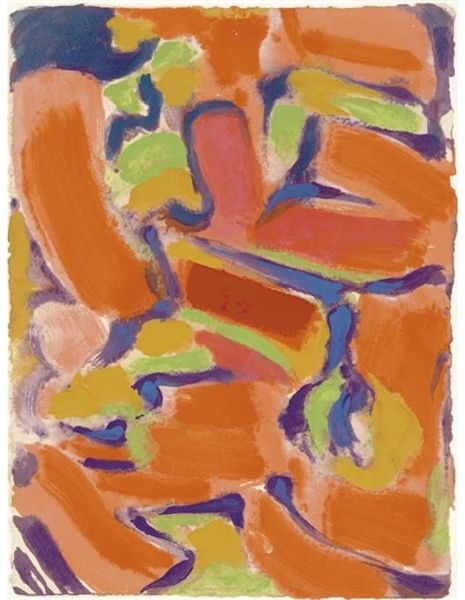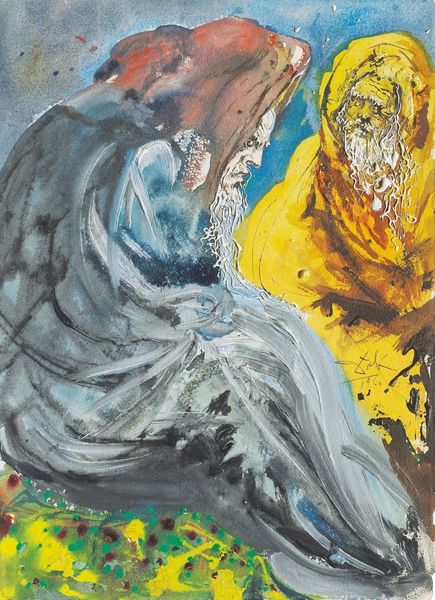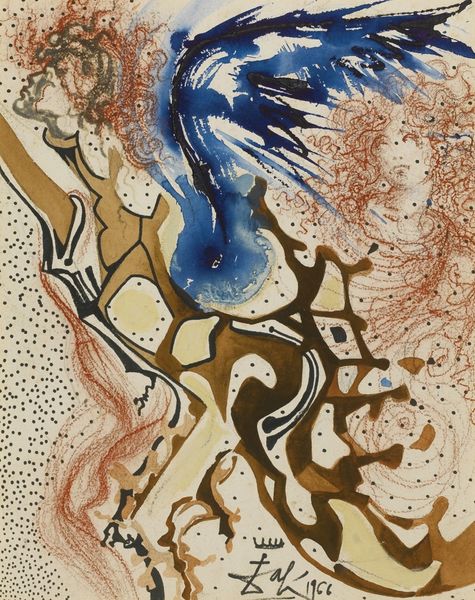
painting, oil-paint
#
organic
#
painting
#
oil-paint
#
oil painting
#
expressionism
Copyright: Public Domain: Artvee
Editor: This is Christian Rohlfs' "Weiße Hyazinthe," painted in 1916. It’s an oil painting, and it's surprisingly gestural for a floral still life. It's all about the brushstrokes! What's your interpretation of Rohlfs’ choices here? Curator: Indeed, the handling of the medium is noteworthy. Observe how Rohlfs uses broad, almost crude strokes of contrasting colours – primarily blues, greens, and browns. This strategic deployment of chromatic elements serves to structure the composition; a fascinating dichotomy exists between representation and abstraction. Editor: Abstraction? I can definitely see a hyacinth, but where’s the abstraction coming in? Curator: The abstraction is most evident in the simplification of forms and the artist's departure from strict mimetic representation. The individual petals, for instance, are rendered as elongated strokes rather than meticulously detailed features. He's capturing the *idea* of the hyacinth, not necessarily the *appearance*. The juxtaposition of complementary colours such as red and green and the use of directional lines create a sense of movement and dynamism that might not be inherent in the still life subject itself. Consider the placement of the vase—what would you make of that square section on the left? Editor: It's just... there? An off-kilter brown block amidst the chaotic strokes. The whole painting feels unsettled, yet deliberately so. It brings focus back to the subject. Curator: Precisely. Note the composition. The off-center flower draws attention. Overall, this composition isn’t trying to hide behind traditional approaches; instead, its brushwork announces its intentions—its structure. What initially seemed like an amateur choice may instead by a way of drawing the eye, wouldn’t you agree? Editor: Yes! That tension between representation and… expression, perhaps, is really what makes it so compelling. It makes me wonder if that was a style in the time, Expressionism, versus intention for this artwork. Curator: A distinction well noted. The historical situation cannot ever completely remove the individual’s intentional expression when it comes to creating. This painting reveals the complex interrelations.
Comments
No comments
Be the first to comment and join the conversation on the ultimate creative platform.
